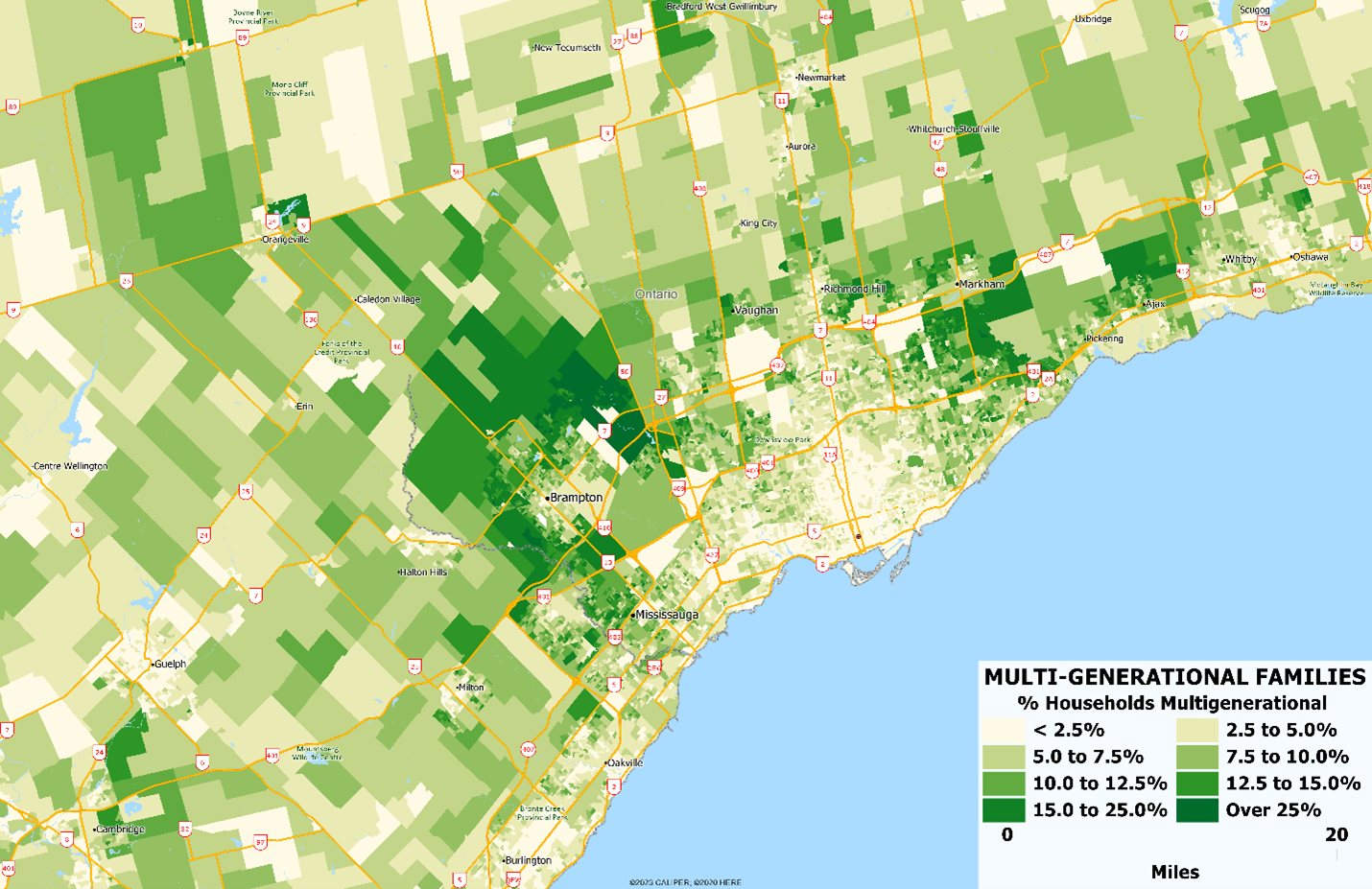With a rise in inflation, housing costs and childcare, some people may choose to live with family in multigenerational housing. There is also a correlation between immigration and multigenerational housing, especially in Canada. These patterns are very prevalent, especially in major cities, but the smaller Canadian cities are starting to see more multigenerational housing as well.
Before we dig into the data, it is important to look at how this data is collected. For those familiar with how the Census and ACS asks questions, the Canadian Census asks questions differently, which means that there is not an apple-to-apple comparison to the United States. The United States is far more focused on race and Hispanic origin, while in Canada the focus is on language and immigration. Canada uses concepts like “mother tongue” which the US Census Bureau does not, and aside from tracking “visible minorities”, avoids race altogether. Multigenerational and multi-family households (e.g. two or more non-related households) are much more prevalent in Canada than they are in the United States, and the reporting is different because of it. Multigenerational households are much more prevalent in the immigrant communities of Canada than they are in the United States. The ACS tracks relationship in household (e.g. parent of householder) but does not even tabulate multigenerational households as they do in Canada.
Toronto, for example, is an interesting city to look at when examining these two variables. Roughly 5% of households in Canada are multigenerational, and these are heavily concentrated in the cities where the percentage of immigrants is high.8.4 of 39.9 million people in Canada are immigrants, just over 20%. The Toronto metropolitan area has 35% of the total immigrant population of Canada, making up 42% of its population. For multigenerational households, Toronto has 32% of the national total. For reference, Toronto has just over 20% of the national population. Below, we mapped the Toronto area twice, first showing the percentage of households that are multigenerational, and then the percentage of the population who are immigrants. Very similar patterns emerge. Scarborough in the east and Mississauga/Brampton in the west have high concentrations of both populations. Many established areas of the central city have low percentage of both, and the old town centers of places like Whitby and Newmarket are low as well. Whitby and Newmarket were once quite isolated from the city, but the city has grown over the decades to enclose them.


There are some surprises in immigration in Canada, especially recent immigration, where recent immigrants make up a substantial proportion of the population in scattered small towns and even in fishing villages of the Newfoundland coast. 76% of the immigrant population in Canada lives in Toronto, Vancouver, Montreal, Calgary, Edmonton, or Ottawa, but these cities account for 57% of the total population. Recent immigrants have been less concentrated – but only slightly – with these same cities accounting for 73% of the total. While this may seem like a small reduction, the imprint of immigration on smaller towns is increasingly apparent. Saskatoon, with a population of 350,000 people has a higher number of immigrant population than does Quebec City, with a population of 870,000 people. In small towns like Brooks, High River, Wood Buffalo (Alberta), Winkler, Steinbach, and Thompson (Manitoba), well over 10% of the population are immigrants, many of them arriving recently. The small town of Brooks Alberta, population 17,000, has over 5,000 immigrants. Much of this is due to Canadian immigration policy, which now encourages immigrants to consider living outside of Toronto, Vancouver, and Ottawa.
With multigenerational living on the rise in popularity, especially in Canada among the immigrant population, it will be interesting to continue to look at these numbers and see if there are any major changes. In the U.S., the ACS may consider adding questions that reflect these trends, as we suspect they are also on the rise here.
